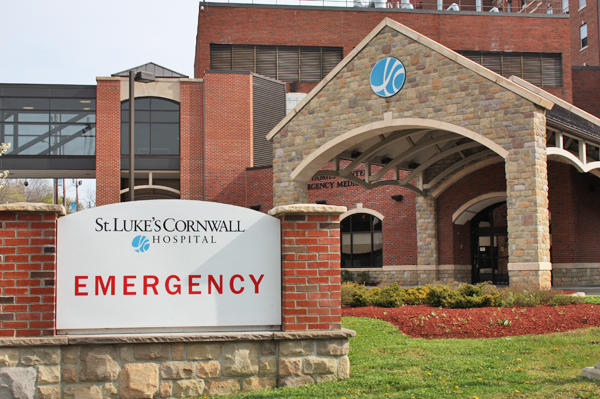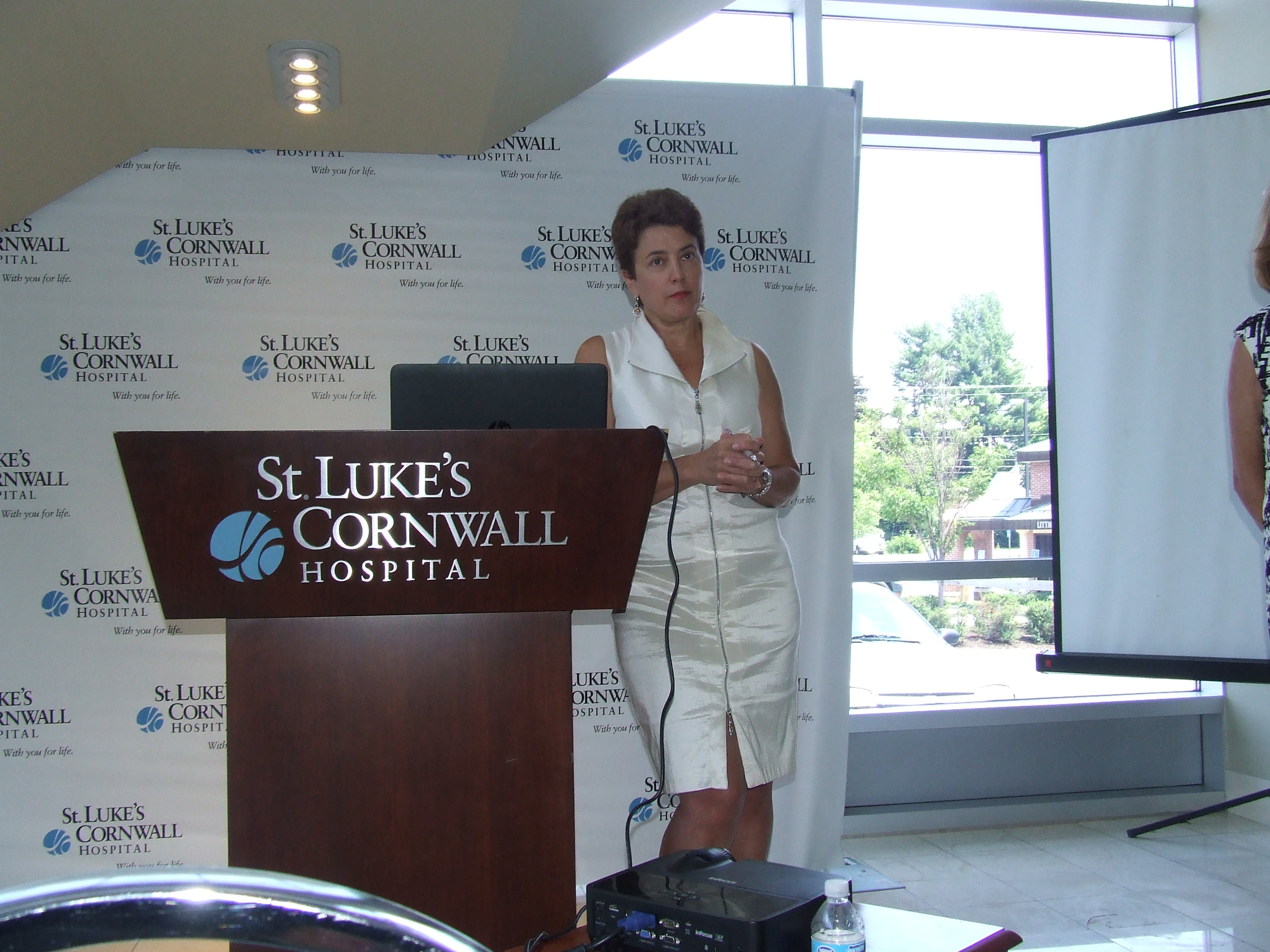
Summer is well underway and more and more people are making their way outdoors to participate in various activities whether they’re sports related, for leisure, or even to work around the house. With any type of physical activity it’s not uncommon for one to succumb to injury or other minor ailment. Some people may require medical attention and choose to seek out care at their local emergency room. Although St. Luke’s Cornwall Hospital is in the business of making people better, it would rather keep people out of the emergency room.
“Hospitals are pretty much focused on a continuum of care so we obviously don’t want you to get hurt or sick,” said Brianna Halk, a marketing associate with the hospital. “We are providing services to keep you well throughout the process. These tips are ways to keep our community safe and that’s what we want.”
The hospital’s medical experts provided the Local with information on how to avoid the three most common causes for trips to their ER – fractures, lacerations, and allergic reactions.
Fractures
The three most common causes for bone fractures are due to sports related activities; from falls, hits, and accidents; as well as bone thinning or osteoporosis.
Athletes are prone to fractures due to the higher level of stress and force applied often on the bones. Although the body produces new bone to replace bone which is broken down by the stress of everyday living, that balance may become upset with excessive physical training and the body may not produce a sufficient amount of bone. Such weaknesses can cause micro cracks, or stress fractures, in the bone. This is most common in distance runners or those who participate in high-impact activities.
Common areas for fractures include the wrists, hands, collarbones, as well as bones in the ankle and feet.
In women, fractures are more likely to occur in those with eating disorders or those with menstrual disorders. Athletes with menstrual disorders have lower estrogen levels, often leading to lower bone mass.
Falls, hits, and accidents are also common causes for fractures. Those who try to catch themselves while falling often fall hard on the ground causing bones to crack. This is mainly seen in the wrists as the hands normally hit the ground first. Injuries are also common in the shoulders, elbows, and arms, especially those engaged in physical contact. Those who play contact sports have a higher risk for fractures.
In order to keep bones strong and healthy, keeping a diet rich in calcium is recommended. Calcium rich drinks should not be replaced with high sugar, high fat drinks. Calcium supplements can also be taken daily. Planning for days of rest is important. Continual stress on bones causes them to become brittle and break.
In order to avoid bone thinning or osteoporosis, adults should get at least 30 minutes of exercise each day to strengthen their bones. Weight-bearing exercise is recommended to force the body to resist gravity and stimulate cells in the body that make new bone. Strength training causes muscles to pull on the bone resulting in increased bone strength. Strength training also increases flexibility and reduces the likelihood of falling.
Diets should include an ample amount of calcium. Calcium rich foods and beverages include: low-fat or fat-free dairy products, calcium fortified juices and food, sardines with bones, certain vegetables, soy products, and calcium supplements. Alcohol (more than two drinks daily) and cigarette smoking should be avoided as they can lead to bone loss and fractures.
In the event of a broken bone, patients are urged to go to the ER and not wait for a doctor’s appointment. Any delay may allow the bone to fuse back together in the wrong spots, causing possible future complications.
Lacerations
Lacerations are described as a cut that needs stitches within six hours of the injury. The exception is cuts to the face and scalp, which generally can be repaired up to 24 hours after the injury. The term “laceration” implies a torn or jagged wound that tends to be caused by blunt trauma. Common causes of lacerations include contact with a sharp edged object, blunt trauma, child birth, or a blow, fall or collision.
If a laceration does occur, one should immediately inspect the affected area for any remaining debris. Debris should not be removed as bleeding can dramatically increase. Medical attention should be sought.
Apply direct pressure to the affected area, and if possible, elevate the wound above the heart. This will decrease the blood flow to the affected area. A tourniquet may make the affected area worse.
Once bleeding has stopped, clean the area with warm water and gentle soap. Antibiotic ointment should be applied to reduce the chance of infection. Put a sterile bandage on the area and change it every four hours. After a few days, remove the bandage all together to promote healing.
A trip to the ER is recommended if: bleeding hasn’t stopped after 10 to 15 minutes of firm and steady pressure, if the laceration is deeper than a quarter of an inch, the laceration is bleeding severely, when the laceration is over a joint or very deep, you cannot get the laceration clean, if it feels like there is something in the wound, if the laceration is from a human or animal bite, if muscle, fat, or bone is exposed, the edges of the wound cannot easily be moved together or aligned, or if the wound is located at an area of high stress such as joints, hands, feet, and chest.
A health care provider should be called if the patient has not had a tetanus booster within 5 to 10 years or if the wound doesn’t heal and shows signs of infection such as redness, swelling, pus, or excessive pain.
Allergic Reactions
During the summer, individuals can be prone to seasonal allergies, an allergic reaction to something that is only present for part of the year. Such allergies include pollen, trees, weeds, and grass. Symptoms include sneezing, watery eyes, nasal congestion, runny nose, itchy throat, or cough.
One should plan appropriately before heading outdoors. Check the pollen count before planning activities or avoid being outdoors in the early morning when pollen is most widespread. Sunglasses will protect the eyes from pollen, but after going back indoors, one should shower, wash their hair, and change their clothes. Vacation in places where the pollen is low, otherwise; make sure you have your medication with you.
Other than pollen, bee allergies are also common during the warm months of the year. Many people don’t know they are allergic to bees until they are stung by one, so visiting the doctor for allergy testing is a great way to be proactive as bee stings can be deadly. Those who are allergic to stings, should be prescribed an Epi-Pen. The shot will slow down all symptoms, but a visit to the hospital is still required. If deathly allergic, wearing a medical necklace or bracelet letting people know of the allergy will also aid in one’s safety.
Those who have an allergy to bee stings may experience itching, hives, or swelling over a large part of the body, swelling of the tongue or throat, difficulty breathing, dizziness, stomach cramps, or nausea or diarrhea.
To prevent bee stings: avoid wearing sandals or walking barefoot in the grass, don’t swat at or run from bees, don’t drink from open sodas or cans, avoid sweet smelling perfumes and colognes, avoid bright colored clothing, wear socks, shoes and gloves when doing yard work, use screens on doors and windows, keep car windows closed when driving, and wear long pants and long sleeves outdoors.



